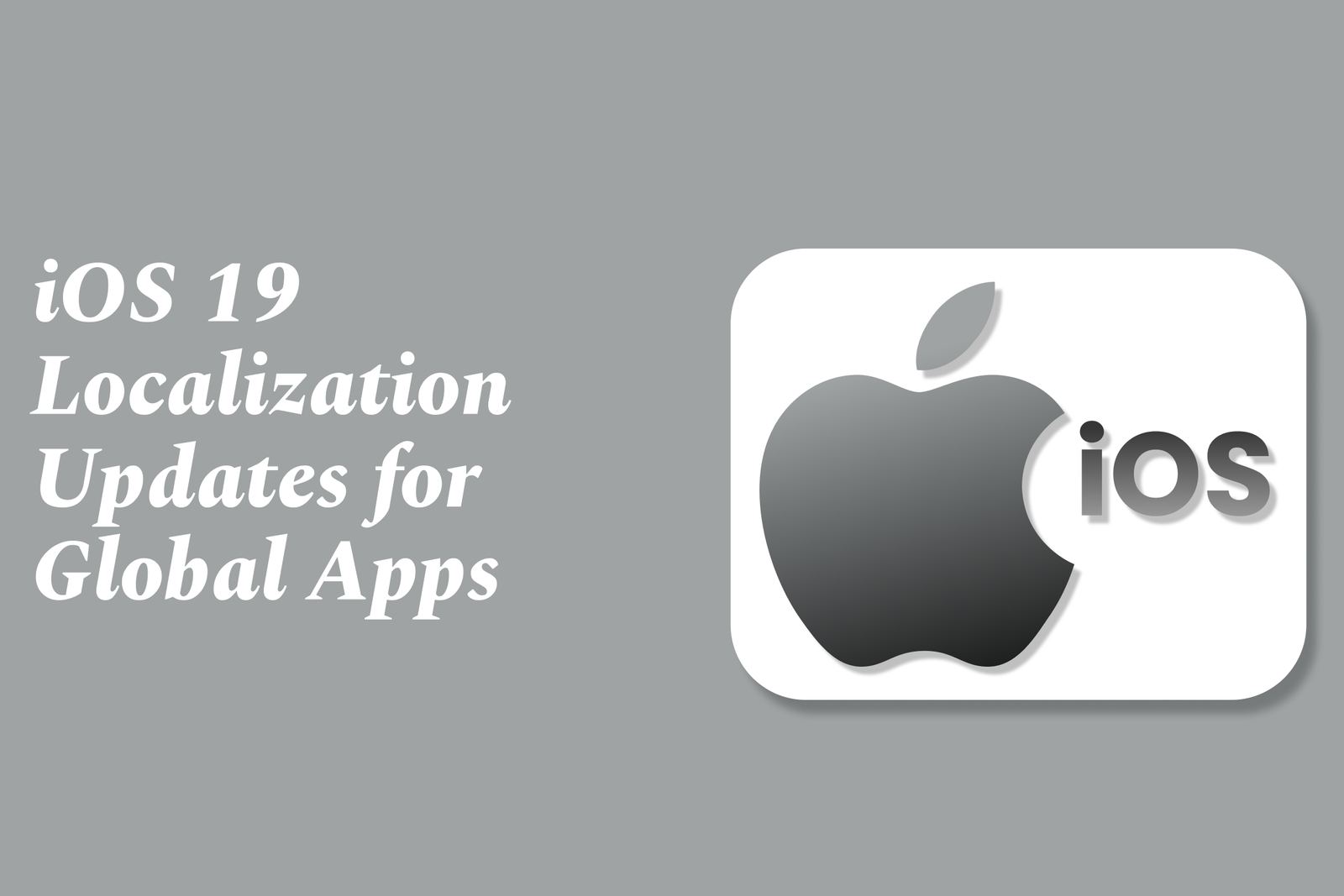iOS 19 localization updates for global apps
iOS 19 brings major localization updates for global apps, enhancing support for diverse languages and regional settings within a redesigned, unified interface. Developers can leverage new APIs to create seamless, culturally relevant experiences across all Apple devices worldwide.
iOS 19 Localization Updates for Global Apps
1 ) Overview of Apple's OS Overhaul
Apple is preparing a major update across its platforms, including iOS 19, iPadOS 19, and macOS 16. This overhaul aims to enhance both user experience (UX) and developer experience (DX) with significant design and functionality changes. The updates seek to unify the look and feel across Apple devices for a seamless ecosystem.
2 ) Key Design Changes
The redesign will affect icons, menus, applications, windows, and system buttons. Inspired by visionOS (the software for Apple’s Vision Pro headset), the overhaul emphasizes greater transparency and introduces new window styles and button types to align all system elements for consistency.
3 ) Impact on Localization and Global Apps
With the comprehensive redesign, global app developers must focus on localization readiness to ensure their apps support the updated UI and UX paradigms effectively. Apple’s approach favors a unified system wide design that requires apps to adapt to new visual elements and interaction patterns, supporting diverse languages and regional preferences seamlessly.
4 ) Implementation Timeline
The updates will be unveiled at Apple’s Worldwide Developers Conference (WWDC) scheduled for June 2025, offering developers ample time to explore new APIs and design guidelines, and prepare their apps for localization that complements the iOS 19 enhancements.
5 ) Summary
iOS 19 introduces profound localization considerations within a sweeping OS redesign focused on harmonizing user interactions across Apple’s ecosystem. Developers building global apps must prioritize adapting to new design specifications inspired by visionOS to deliver inclusive and polished experiences worldwide.
https://justacademy.in/news-detail/android-performance-benchmarking-updates
https://justacademy.in/news-detail/react-native?s-secret-sauce-for-lightning-fast-startups
https://justacademy.in/news-detail/android-language-support-updates
https://justacademy.in/news-detail/react-native?s-new-gesture-apis:-what-you-can-build-now
https://justacademy.in/news-detail/apple-swift-6.0-released-with-major-changes
Related Posts
In 2025, top Angular libraries offer modern, feature-rich components and tools for building dynamic web apps. From powerful data grids to low-code platforms like UI Bakery, these libraries enhance development speed, UI design, and scalability, making them essential for Angular developers.
Migrating from AngularJS to Angular 17 involves gradually upgrading your app by running both frameworks together using tools like ngUpgrade, rewriting components in TypeScript, and adopting Angular’s modern architecture to enhance performance, maintainability, and long-term support.
Angular state management tools help organize and handle app data efficiently, improving scalability and maintainability. Popular options include NgRx for robust, RxJS-based patterns, and newer Signal Store solutions that offer simpler, reactive approaches integrated tightly with Angular’s latest features.
RxJS in Angular empowers developers to manage asynchronous data streams with powerful operators like `forkJoin`, `combineLatest`, and `zip`. Mastering these key operators in 2025 is essential for building efficient, reactive applications that handle complex event sequences seamlessly.
Angular performance optimization in 2025 focuses on improving app speed and responsiveness by using techniques like OnPush change detection, lazy loading, efficient data caching, and AOT compilation. These practices reduce load times, enhance user experience, and ensure scalable, fast Angular applications.
In 2025, Angular remains preferred for large-scale, enterprise apps with its robust, all-in-one framework, while Vue attracts developers seeking simplicity and fast development for smaller projects. Both frameworks excel, with choice driven by project needs and team expertise.
Angular Signals are a new reactive primitive in Angular 16 that enable fine-grained, efficient change detection by automatically tracking dependencies and updating only affected parts of the UI. They simplify state management and boost app performance, revolutionizing Angular's reactivity model.
Angular interview questions to prepare in 2025 focus on core concepts like components, directives, data binding, routing, and dependency injection, along with TypeScript mastery and latest Angular features to ensure strong practical knowledge for building scalable, efficient web applications.
AngularJS reached its official end of support in January 2022, meaning no further updates or security patches. To ensure app security and performance, developers should consider migrating to modern Angular versions or seek third-party long-term support options if immediate migration isn’t possible.
The Angular Roadmap 2025 highlights upcoming features focused on improving developer experience and performance, including zoneless Angular, Signals integration, enhanced Forms, async data handling, improved HMR, and expanded Angular Material/CDK enhancements, driving modern, efficient web app development.










